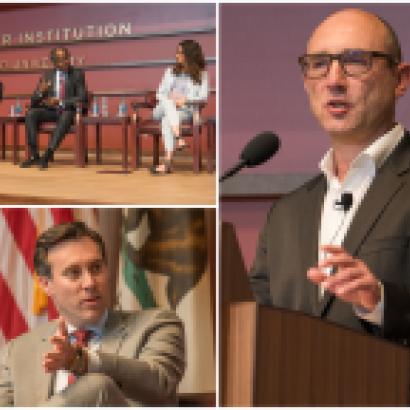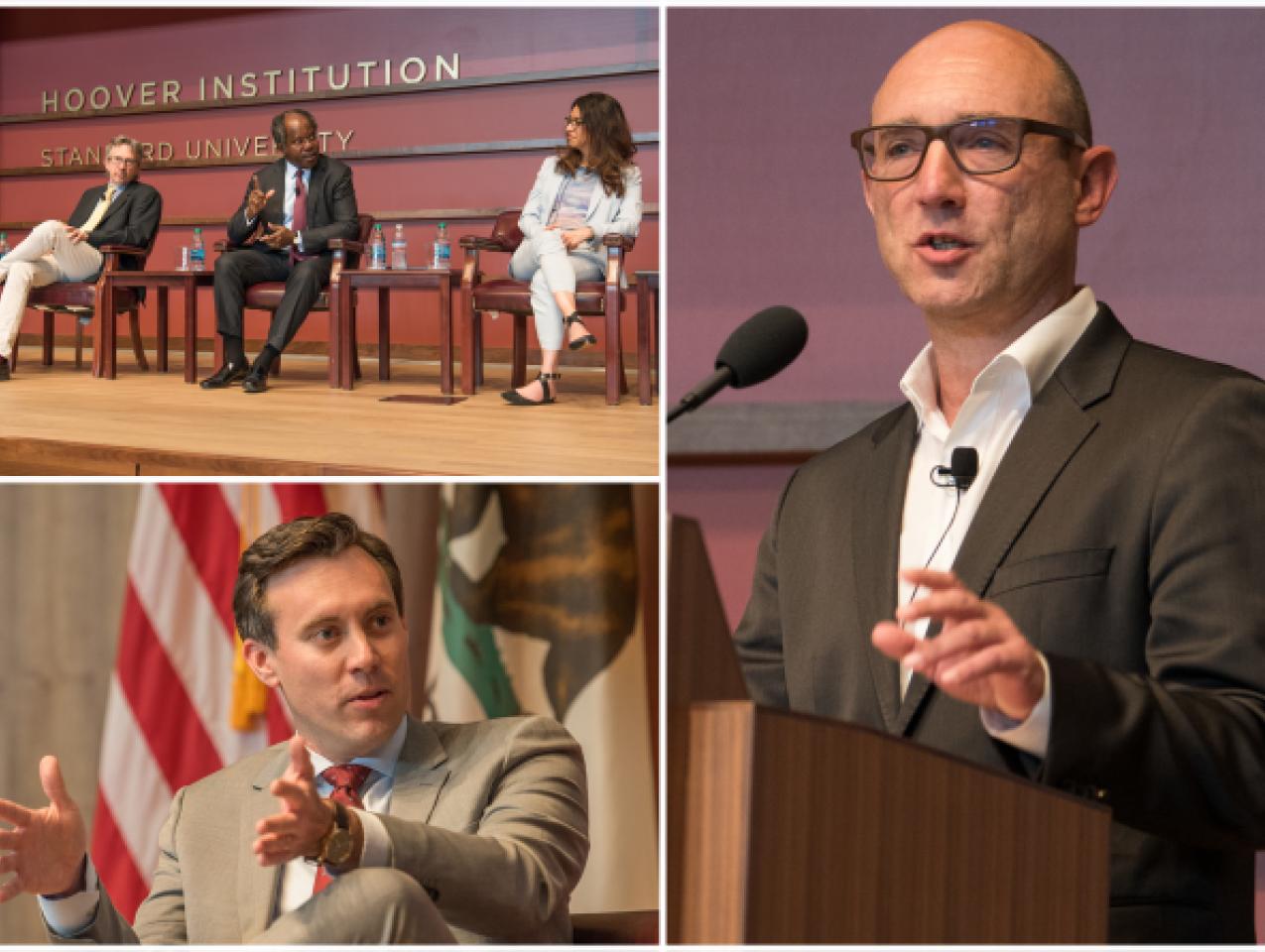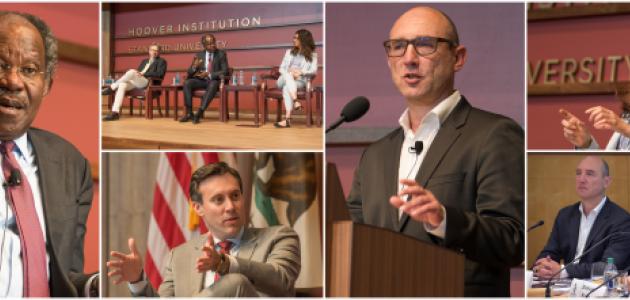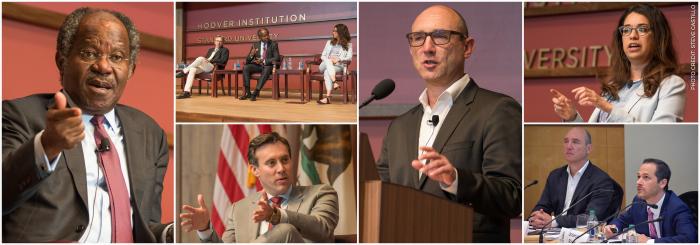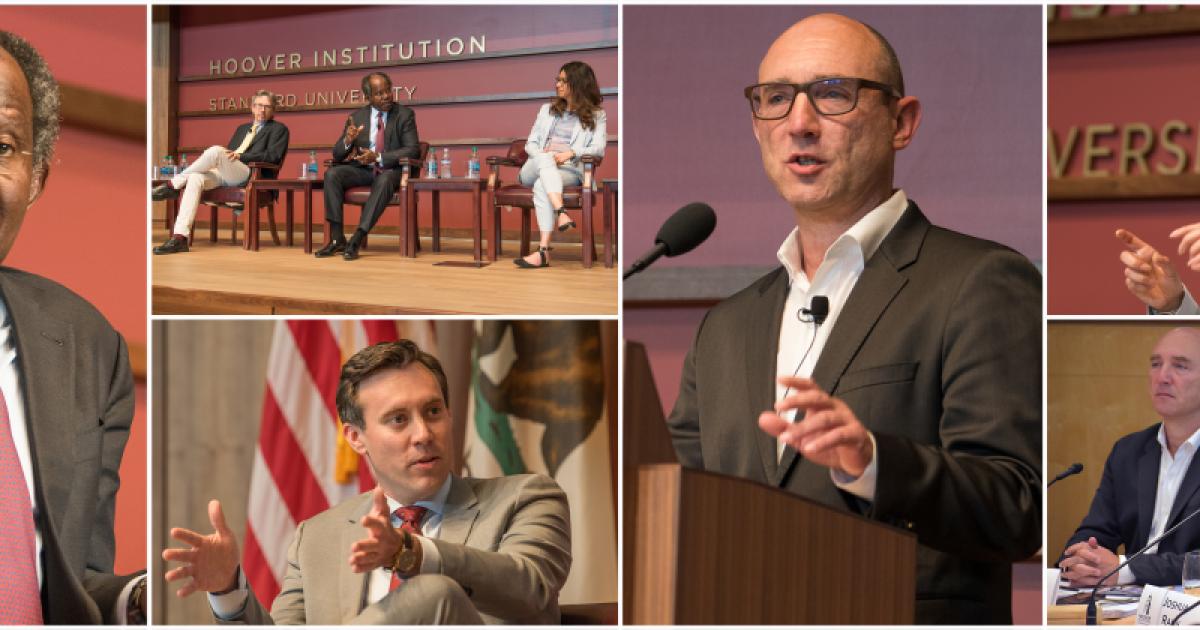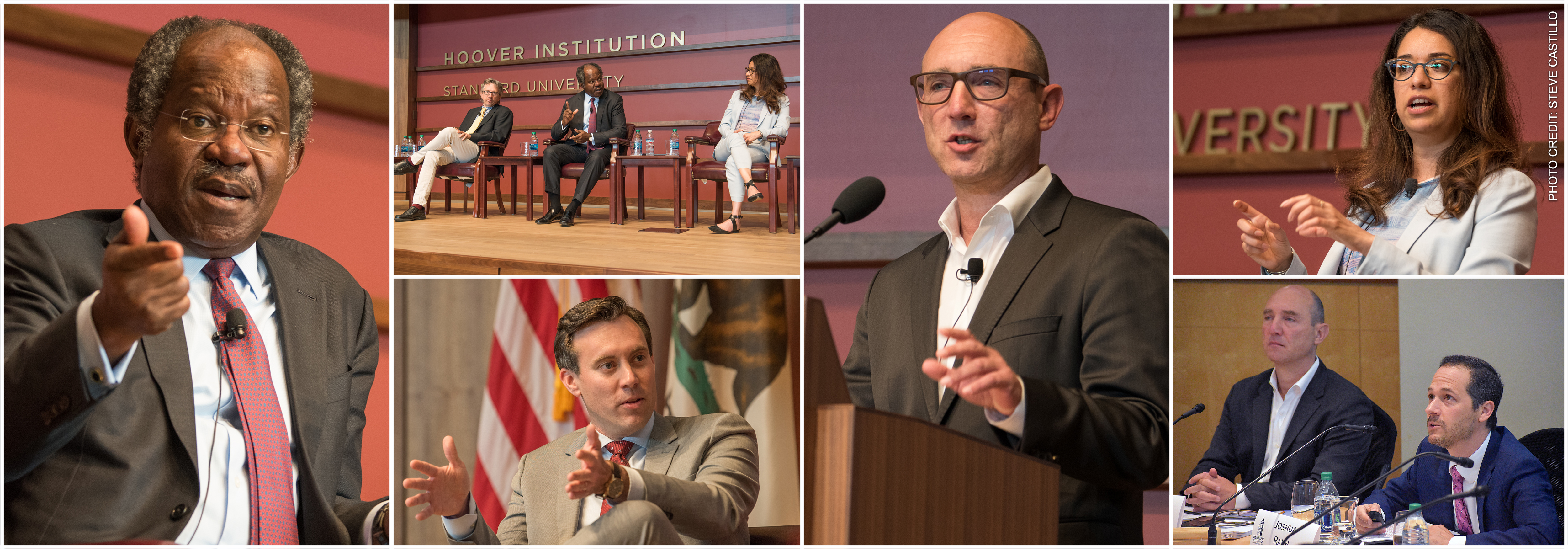
It is widely understood that there is an infrastructure "gap" between planned and desired infrastructure; but actual investment in infrastructure is rife with challenges. This one-day symposium aimed to understand the obstacles that exist to the financing of infrastructure, and discussed policy conclusions given these obstacles.
The symposium addressed some of the following queries.
- Is infrastructure really an asset class that can satisfy the promise of delivering a desirable risk/return profile for pension funds and other investors?
- Is it possible to organize infrastructure investments to place them on an optimized financial frontier for private Investors?
- How can infrastructure projects and investment vehicles be structured to minimize the agency and governance problems?
- Morning Session -
Barbara Weber, “Infrastructure as an Asset Class: An Overview”
What is infrastructure exactly, and how should limited partners gain exposure to this asset class? Barbara Weber, Founding Partner of B Capital Partners, provided important insight and context as to how investors effectively judge and determine worthwhile investments as they consider project size, the infrastructure category to which a project belongs, and, finally, payout structure, among other considerations when making investments. During the presentation, Weber introduced the Environment, Social, and Governance (“ESG”) class of infrastructure investments—a class that aims to have wide-reaching societal and social benefits that cannot be measured solely by investment returns. This classification sparked a lively discussion as to how investors should view and value such a class due to the debatable and fickle nature of what heterogeneous investors might view as a “societal benefit” at any given time.
Joshua Rauh, “The Subsidy to Infrastructure as an Asset Class”
Joshua Rauh, Director of Research and Senior Fellow at the Hoover Institution and Ormond Family Professor of Finance at Stanford Graduate School of Business, presented the findings from a recent paper he coauthored, “The Subsidy to Infrastructure as an Asset Class.” Public investors, such as public pension funds, government agencies, and sovereign wealth funds, invest in infrastructure with the expectation of steady returns and low levels of risk. However, are these public entities investing well relative to their private counterparts, and are they maximizing their returns when comparing these investments to other alternative asset classes? Ultimately, Rauh and his coauthors Aleksandar Andonov and Roman Kräussl found that public investors perform worse than private institutional investors in their infrastructure fund investments while being exposed to deals with similar characteristics and terms. In fact, by choosing funds that invest in poorly performing projects, public investors are creating an implicit subsidy to infrastructure as an asset class that amounts, Rauh calculates, to approximately $1.3–$1.5 billion per year if the alternative opportunity is the S&P 500 or real estate funds, $3.3 billion per year if compared to listed infrastructure funds, or $8.5 billion per year if compared to private equity buyout funds. Following the presentation, the panel discussed additional ways the paper could potentially provide clearer and more defined results, such as including controls on specific contract details and by including deals from a larger number of countries.
Josh Lerner, “Investing Outside the Box: Evidence from Alternative Vehicles in Private Equity”
Josh Lerner, Jacob H. Schiff Professor of Investment Banking at Harvard Business School, presented his findings from a recent paper he coauthored entitled “Investing Outside the Box: Evidence from Alternative Vehicles in Private Equity.” In this paper, Lerner and his coauthors use previously unexplored custodial data to examine the use of alternative investment vehicles in private equity over four decades. Over this period, Lerner finds a sharp increase in capital directed to alternative vehicles, with the share approaching 40 percent of all private equity commitments in 2017. The average performance of these alternative vehicles matches that of the overall private equity market; however, the performance fell short of the general partners’ main funds. The best performance in alternative vehicles is achieved by endowments, private pensions, and insurers. Limited partners with better past performance also perform better in alternative vehicles, even after conditioning on general partners’ past records. Lerner’s conclusion from these findings is that the returns in private equity depend on the match between general partners and limited partners and both parties’ outside options. The discussion that followed the presentation partly concerned the performance of each limited partner type. A noticeable trend is that publicly invested money for both vehicle categories—discretionary and general partner directed—had worse returns than other types of limited partners. The panel largely agreed that this conclusion was derivative of the fact that top talent in this space is typically poached from the public limited-partner classes by higher salaries and better opportunities elsewhere.
Eduardo Engel, “Financing PPP Projects with PVR Contracts: Theory and Evidence from the UK and Chile”
Eduardo Engel, President of Espacio Publico and Professor of Economics and Business at the University of Chile, offered insights and findings that he and several coauthors discover in their paper “Financing PPP Projects with PVR Contracts: Theory and Evidence from the UK and Chile.” In this paper, Engel and his coauthors present a series of factors that make present-value-of-revenue (“PVR”) contracts superior to fixed-term concessions for public-private partnerships (“PPPs”) with regard to their concerns regarding risk allocation. Ultimately, upon comparing these two contract types across examples in the United Kingdom and Chile, Engel finds that PVR contracts have been at least as attractive for debt financiers as their fixed-term counterparts, and that PVR helps materialize the efficiency gains that are possible when PPPs are financed with user fees. One of the benefits of PVR contracts that came under scrutiny by a number of panelists was the “renegotiation” benefit. More specifically, instead of having to default on a fixed contract in the event where demand turns out to be quite low relative to the contract’s stated expectations during its term, the idea was that PVR contracts allow for a renegotiation, and therefore the contract would provide more of an opportunity for repayment. However, some panelists feared scenarios where the repayments would be dragged out, making it harder to recoup the money in a timely manner.
Richard Geddes, “Do Public-Private Partnership–Enabling Laws Increase Private Investment in Transportation Infrastructure?”
Following Engel’s presentation, Richard Geddes, Professor in the Department of Policy Analysis and Management at Cornell University and Founding Director of the Cornell Program in Infrastructure Policy, attempted to answer an important question regarding infrastructure investment: how does legislation enabling PPPs in states affect overall infrastructure investment in the state? Geddes presented significant findings that he and a coauthor discover in a paper that attempts to answer this question, entitled “Do Public-Private Partnership–Enabling Laws Increase Private Investment in Transportation Infrastructure?” Ultimately, Geddes finds that the proportion of a state’s infrastructure investment that is delivered via PPPs increases with PPP-enabling legislation. Furthermore, the aforementioned legislative provisions are also particularly important in attracting private investment as well. The discussion centered around what the drivers of PPP laws might be and the possibility for future analysis that considers whether a state’s willingness to grant PPP provision might be related to the stringency of states’ fiscal-policy rules.
Arpit Gupta, “Take the Q Train: Value Capture of Public Infrastructure Projects”
Dr. Arpit Gupta, Assistant Professor of Finance at New York University Stern School of Business, then presented his paper “Take the Q Train: Value Capture of Public Infrastructure Projects,” in which Gupta and his coauthors attempt to estimate the impact of the construction of one subway station on local real estate prices. Gupta finds evidence of higher real estate prices in the vicinity of areas served by the new extension of the Q train, relative to other areas in Manhattan’s Upper East Side. However, only 30 percent of the private value created by the subway is captured through property taxes, an insufficient sum to cover the cost of the subway. Gupta believes that through targeted tax increases this gap can be closed. At the close of the presentation, there was a significant deal of conversation around the estimation of the price appreciation in the area. Panelists asked for better controls on what exactly caused that price appreciation, in order to better understand whether it was directly related to the construction of the new subway stop.
- Afternoon Session -
Sir Danny Alexander, “The Role of International Financial Institutions in Supporting Infrastructure”
Sir Danny Alexander is Vice President and Corporate Secretary of the Asian Infrastructure Investment Bank (“AIIB”). Prior to this post, Alexander was one of the founders and leaders of the first UK coalition government since World War II. From 2010 to 2015 he served as a senior minister in the UK Treasury, where he secured more than £100 billion of public expenditure savings. He has played an active role in driving international cooperation on tax, trade, and transparency during the UK G8 presidency. A seasoned negotiator and communicator, Alexander has engaged with diverse stakeholders and partners on key public policies. He led the work on UK infrastructure policy and delivery leading to the first National Infrastructure Plan, which is now embedded as an annual process. He helped to establish the Green Investment Bank in the United Kingdom and to develop and implement the UK Guarantee Scheme for infrastructure.
In his keynote address, Alexander explained the importance of the AIIB in its efforts to develop infrastructure in the Asia-Pacific region. With a mission of building “lean, clean, and green” infrastructure, the AIIB aims to invest in projects that use allocated funds effectively and efficiently while abiding by strict green policy standards and that ultimately encourage good governance in the projects’ home countries. In only three years, the bank has approved $8 billion for 39 projects in 15 different countries. In the Q&A that followed the speech, many questioned how exactly the AIIB allocated its funds. Alexander explained that this was done entirely on merit and under the high standards established in the AIIB’s mission statement. Alexander finished by stressing the importance of the bank’s goals, as about $1.7 trillion per year in additional funding will be required for Asian infrastructure in order to service the expected influx of 1.2 billion persons moving into Asian cities by 2050.
Edward Glaeser, “Incentives: Infrastructure and Institutions Building, Funding and Managing Public Works”
Dr. Edward Glaeser is the Fred and Eleanor Glimp Professor of Economics in the Faculty of Arts and Sciences at Harvard University. He also served as the Director of the Taubman Center for State and Local Government and as the Director of the Rappaport Institute for Greater Boston. Glaeser’s book Triumph of the City details how living in cities influences our development and psyche in ways previously unexplored and unarticulated. He has written extensively on growth and its determinants in cities for much of his academic career.
In his keynote address, Glaeser attempted to explain the complicated and confusing nature of infrastructure investment and development, keying in on factors—spanning from levels of corruption in local governments to the types of infrastructure projects being undertaken—that determine the success of given projects. This makes the study of such factors utterly vital as we aim to build, rebuild, or upgrade many aspects of our world’s infrastructure in the coming years. After the presentation and the Q&A, which focused on questions regarding the fundamentals of successful infrastructure investment, Glaeser finished by emphasizing the importance of infrastructure as a research topic, as it is currently dramatically understudied by the wider academic community.
Panel Discussion, “The Finance of Infrastructure: Present and Future,” with Isela Bahena, Michael Bennon, John Graves, Roman Kraussl, and Adebayo Ogunlesi
In the final session of the day, Dr. Roman Kraussl, Professor of Finance at the Luxembourg School of Finance and Visiting Fellow at the Hoover Institution, moderated a discussion of wide variety of questions regarding infrastructure investment that were posed to panel members:
- Isela Bahena, Senior Director of Energy and Infrastructure Global Private Markets at TIAA/Nuveen
- Michael Bennon, Managing Director at the Stanford Global Projects Center
- John Graves, Senior Investment Officer of Real Assets at the Washington State Investment Board
- Adebayo Ogunlesi, Chairman and Managing Partner at Global Infrastructure Partners.
This panel discussion served as a capstone for the day, as the discussion drew upon many of the topics and themes that were covered earlier, with special emphasis on the concerns that exist from an investor’s perspective. One stark reality that emerged through the discussion was the fundamental difference between public and private investors with respect to their approaches toward infrastructure investment, as the goals between these classes of investors are entirely dissimilar. Private firms are first and foremost yield-driven, focusing on particular handpicked classes of projects. Meanwhile, public investment has a wider focus that includes projects that do not have the greatest yield potential, such as road construction, and often projects that have additional goals such as ESG-based initiatives. The subsequent Q&A portion of the panel discussion highlighted this fact, and the final question of the day sought to hear policy proposals that may make the currently less attractive infrastructure projects better from an investor’s point of view. The panelists provided a few different policy prescriptions: streamline the current costly procurement process that exists for too many infrastructure projects, cut excessive and burdensome regulations, and altogether eliminate municipal bonds, which currently distort the market and allow governments to finance infrastructure projects at a cost lower than that available to private investors.







